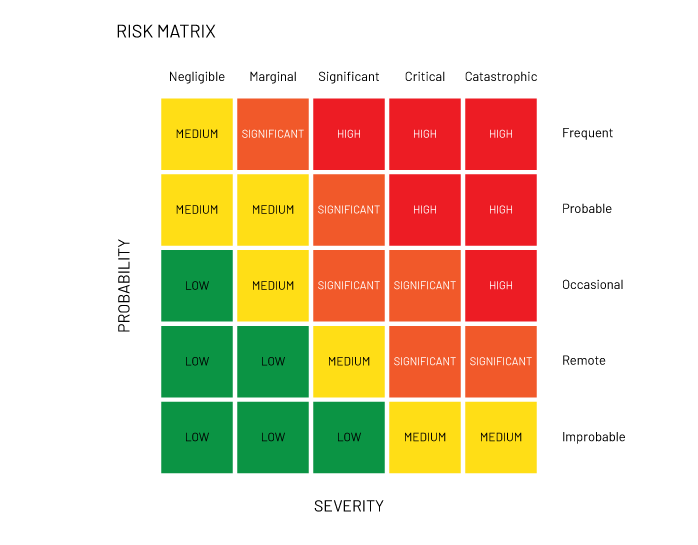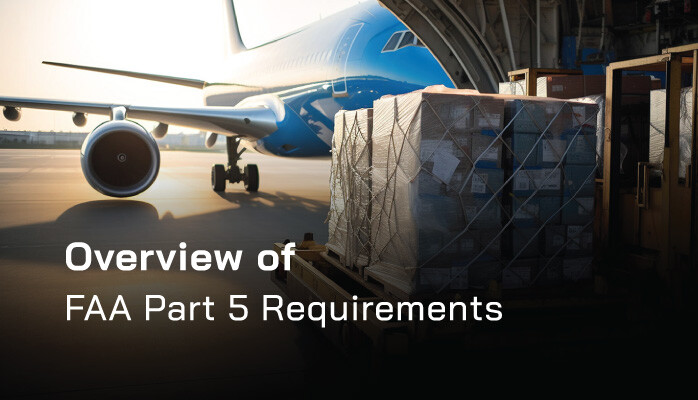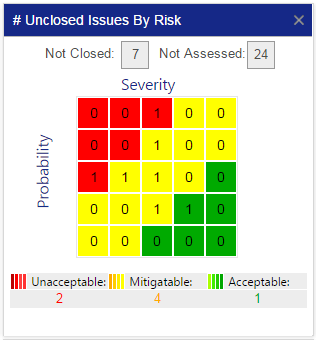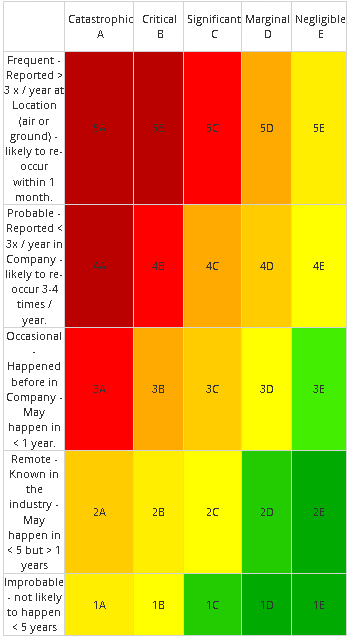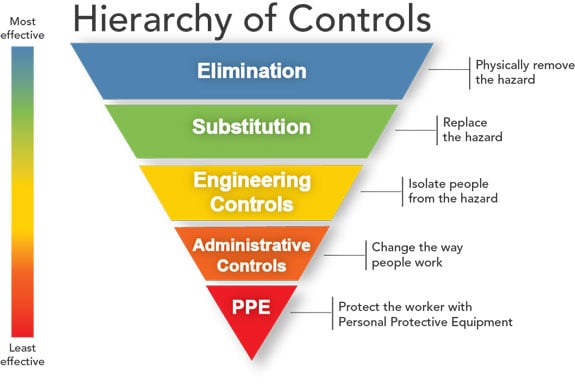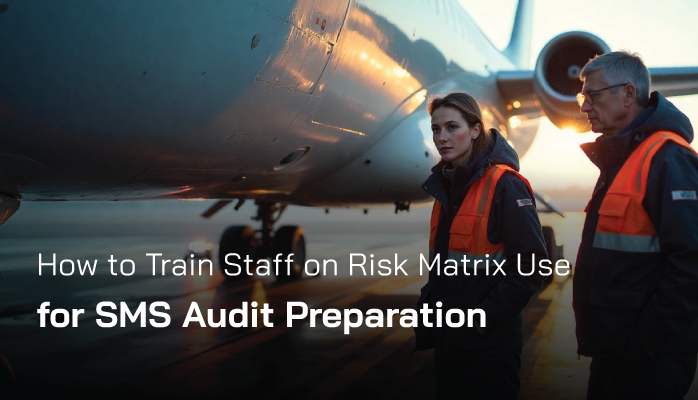For new aviation safety managers, documenting a safety management system (SMS) is a critical yet daunting task, especially when it comes to the risk matrix. The risk matrix is a cornerstone of aviation safety risk management, categorizing risks by severity and likelihood to guide decision-making.
To meet Federal Aviation Administration (FAA) compliance requirements under 14 CFR Part 5, safety managers must document specific actions for each risk level (e.g., low, medium, high) to ensure hazards are mitigated effectively.
This evergreen guide provides a step-by-step approach to documenting these actions, helping new safety managers create clear, FAA-compliant SMS documentation that enhances safety and streamlines audits.
Read More
Topics:
Aviation SMS Implementation,
2-Safety Risk Management,
Risk Management Training,
FAA Compliance
In the fast-paced, ever-changing world of aviation, a robust safety culture is the backbone of operational excellence. For new safety managers tasked with preparing for Safety Management System (SMS) audits, one of the most daunting challenges is training accountable executives to champion safety culture.
These leaders, often focused on operational and financial priorities, may not immediately grasp the nuances of SMS or their role in fostering a proactive safety mindset. Yet, their buy-in is critical to embedding safety as a core organizational value.
Read More
Topics:
4-Safety Promotion,
3-Safety Assurance,
1-Safety Policy,
FAA Compliance,
Safety Culture
For new aviation safety managers, preparing for Safety Management System (SMS) audits is a daunting task, particularly when it involves coaching accountable executives.
These senior leaders, often preoccupied with operational and financial priorities, may struggle to grasp the specifics of 14 CFR Part 5, the Federal Aviation Administration’s (FAA) regulation governing SMS for many aviation operators. Yet, their clear understanding of Part 5 requirements is critical for ensuring compliance, fostering a robust safety culture, and passing audits.
Read More
Topics:
4-Safety Promotion,
3-Safety Assurance,
1-Safety Policy,
Risk Management Training,
FAA Compliance,
Safety Culture
For new aviation safety managers, creating effective safety management system (SMS) documentation can be a daunting task, especially when it comes to residual risk.
Residual risk—the risk that remains after mitigation measures are applied—is a critical component of aviation safety risk management. Properly identifying and documenting residual risk ensures compliance with Federal Aviation Administration (FAA) regulations, enhances operational safety, and prepares organizations for audits.
This evergreen guide provides a step-by-step approach to help aviation safety managers master this process, even if they’re starting from scratch.
Read More
Topics:
Aviation SMS Implementation,
2-Safety Risk Management,
Risk Management Training,
FAA Compliance
For new aviation safety managers, creating aviation safety management system (SMS) documentation that meets Federal Aviation Administration (FAA) compliance standards can feel overwhelming. The risk matrix process is a cornerstone of aviation safety risk management, helping organizations identify, assess, and mitigate risks effectively.
Proper documentation ensures compliance, enhances safety, and streamlines audits. This guide outlines actionable steps to document the risk matrix process, tailored for FAA requirements, to help safety managers build a robust SMS.
Read More
Topics:
Aviation SMS Implementation,
2-Safety Risk Management,
FAA Compliance
For new aviation safety managers, documenting the risk matrix process within a Safety Management System (SMS) can be a daunting task. The risk matrix is a pivotal tool in aviation safety risk management, enabling organizations to assess and prioritize hazards based on severity and likelihood.
For U.S.-based operators, verifying and documenting the accuracy of the risk matrix is essential to meet Federal Aviation Administration (FAA) requirements under 14 CFR Part 5, ensuring regulatory compliance and robust safety outcomes. Accurate documentation not only prepares organizations for FAA audits but also promotes consistent risk assessments and strengthens safety culture.
This article provides aviation safety managers with a clear, step-by-step guide to document risk matrix accuracy, aligning with FAA expectations and simplifying the process for newcomers.
Read More
Topics:
Aviation SMS Implementation,
2-Safety Risk Management,
FAA Compliance
For new aviation safety managers, developing a safety management system (SMS) that meets Federal Aviation Administration (FAA) standards can be challenging, particularly when it comes to crafting effective risk controls.
Risk controls are the backbone of aviation safety risk management, designed to mitigate hazards and ensure safe operations. Poorly designed controls can lead to persistent risks, regulatory non-compliance, and safety incidents.
This evergreen guide outlines best practices for creating robust risk controls within an aviation SMS, helping safety managers build a compliant and proactive safety framework.
Read More
Topics:
2-Safety Risk Management,
Risk Management Training,
FAA Compliance
Why ERP Templates Matter in Aviation
An Emergency Response Plan (ERP) is a structured framework within an aviation SMS that outlines procedures for managing crises, such as aircraft accidents, serious incidents, or operational disruptions like fires or security threats. The ERP integrates with the four SMS pillars—Safety Policy, Safety Risk Management, Safety Assurance, and Safety Promotion—to ensure a proactive approach to safety.
A key aspect of the ERP is its notification framework, which governs how incidents are communicated to regulators, emergency services, families, and the public.
Read More
Topics:
4-Safety Promotion,
3-Safety Assurance,
1-Safety Policy,
2-Safety Risk Management,
FAA Compliance
For new safety managers, the 2-Minute Debrief is a powerful tool to enhance your Aviation Safety Management System (SMS) and ensure compliance with FAA, EASA, and ICAO standards. This quick, anonymous daily survey captures pilot errors, deviations, and safety concerns, helping you predict and prevent incidents. Here’s what it is, how to use it, and why it’s essential for your operation.
Read More
Topics:
4-Safety Promotion,
3-Safety Assurance,
2-Safety Risk Management,
FAA Compliance
What Is Risk Matrix?
For new aviation safety managers, preparing for a Safety Management System (SMS) audit can feel overwhelming. One of the most critical components of SMS compliance is ensuring that staff and accountable executives understand the risk matrix,
Read More
Topics:
4-Safety Promotion,
2-Safety Risk Management,
FAA Compliance,
Safety Culture
